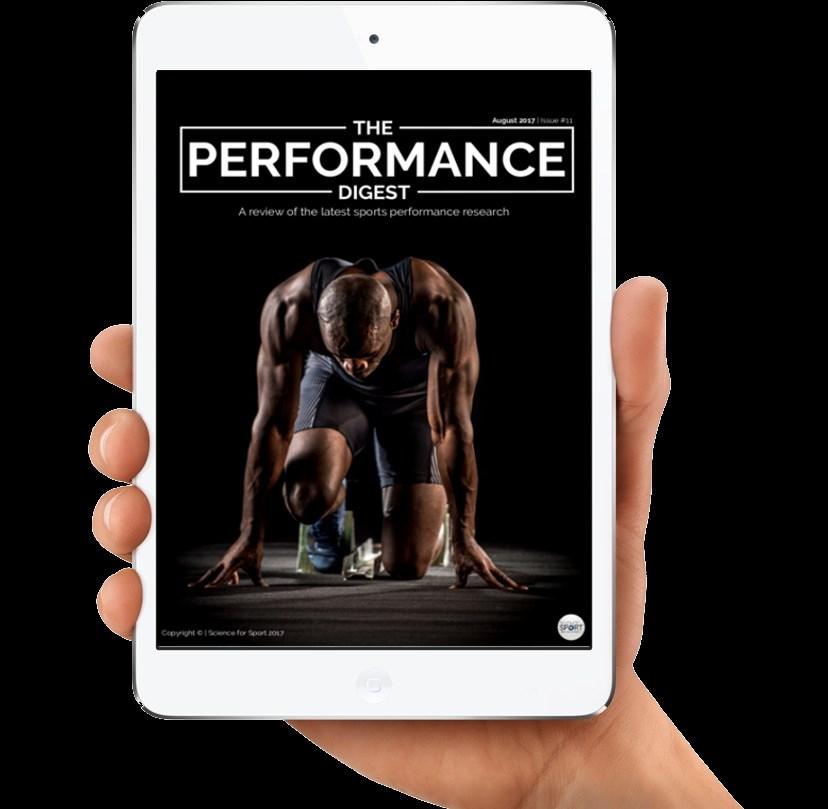

Study Details



Study Details
Practical Takeaways from study

Related links to learn more about the topic
Reviewers comments on the study

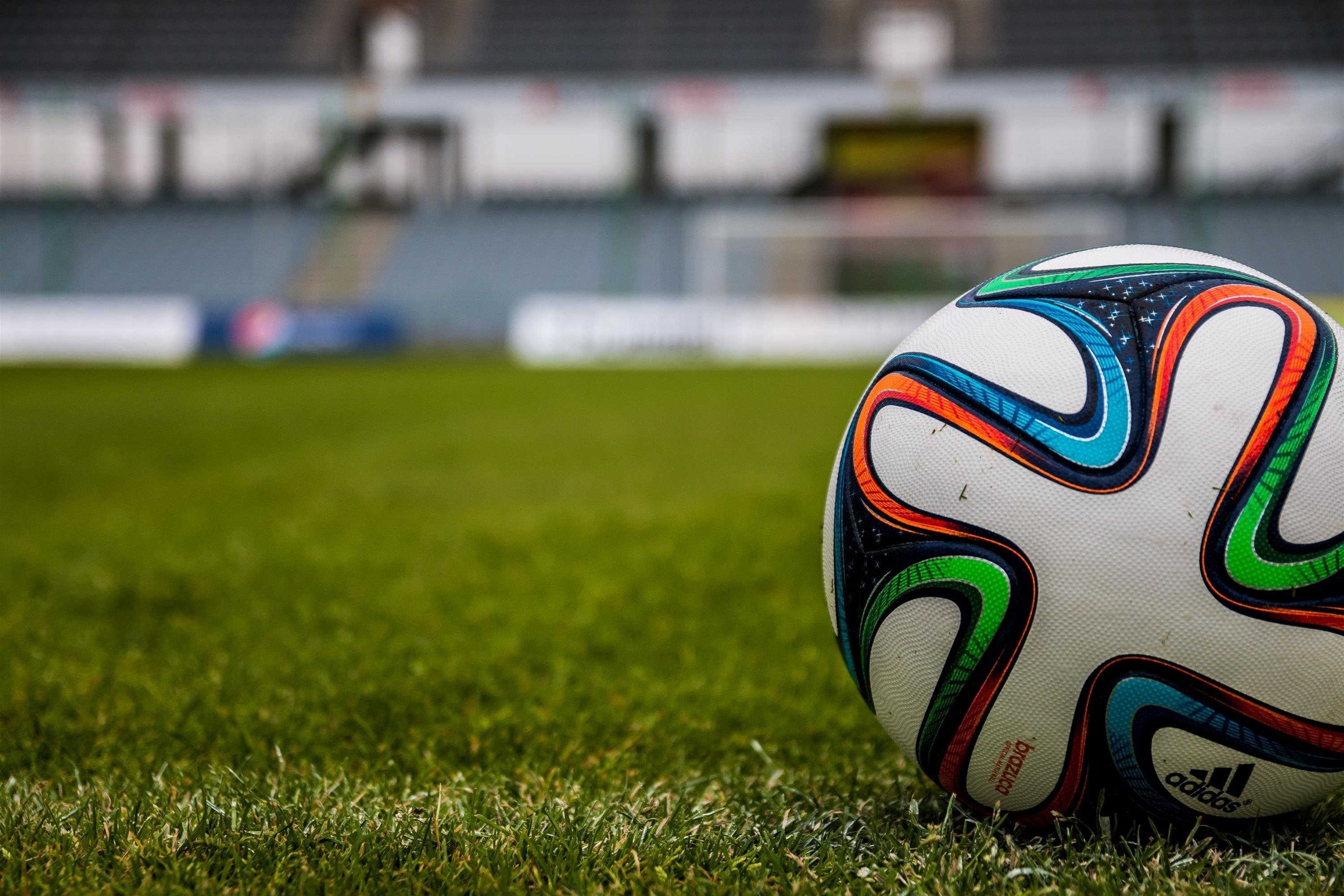


Will is a Lecturer of Sport Coaching at Deakin University, Australia. Prior to this he has worked with Cricket NSW and Cricket Australia in an array of roles ranging from a sport scientist, development coach and a strength and conditioning coach. He completed his PhD at the University of Newcastle, Australia within the area of practice design.
James is currently the Head Strength & Conditioning Coach for the Romanian Rugby Union. He has previously worked in America's professional rugby competition Major League Rugby with Austin Elite and the NZ Women’s National Rugby League Team. He is a published author and has completed a MSc in Sport & Exercise Science from AUT, Auckland, NZ.

Technology & Monitoring
Cody is a strength and conditioning coach and adjunct lecturer at the University of Iowa. He has an MSE in Exercise Science from the University of Kansas and also holds a CSCS from the NSCA.
Tom is the Head of Athletic Development at St Peters RC High School. He holds a Masters in S&C and has previously worked with West Bromwich Albion FC, Gloucester Rugby club, and Great Britain Equine. Tom is our youth research reviewer at Science for Sport.
James is a Performance Nutritionist for the English Football Association and works alongside the England national teams (men's and women's). He is also a SENr registered performance nutritionist and holds a PhD from Liverpool John Moores University.



Injury Prevention & Rehab
Jordan is a Physical Therapist and Strength Coach who currently practices in a Sports & Orthopedic clinic in Bergen County, New Jersey. He is passionate about educating athletes on ways to optimize performance while decreasing the risk of injury.



Despite the highly demanding and stressful environment in which coaches work in, very little is known about their mental health. From the limited information that does exist, we know there are three main stressors that can impact them - performance (e.g., injuries to their athletes, poor playing performance), organisational (e.g., job insecurity, conflicts between playing and other support staff), and personal (e.g., lack of social time, feelings of isolation) stressors (see HERE). Not managing these stressors can lead to common mental disorders (CMD) amongst coaches, in the form of poor sleep, anger towards those around them, or depression amongst other things (see HERE). What is poorly understood though is the number of coaches who experience CMD, which limits the ability of policy makers and mental health practitioners in creating solutions to overcoming poor mental health.

One method that has been shown to improve mental health, mostly amongst athletes, is psychological resilience. In general terms, psychological resilience refers to an individual’s ability to maintain or adapt their regular mental and emotional state during various challenges using facilitative behaviours (see HERE). Some research has highlighted the beneficial use of psychological resilience among elite coaches, although more information is needed in this space to understand its true impact.
That being the case, the authors of this study investigated the relationship between coaches' mental health, the stressors they faced, and their use of psychological resilience.
A total of 119 elite-level coaches (age = 43.03 ± 10.51 yr; coaching experience = 12.75 ± 10.10 yr) from the Netherlands and Belgium completed an online survey that collected information about the impact and incidence of coach stressors on mental health, symptoms of CMD, and resilience. The survey consisted of a mixture of previously validated (e.g., Distress Screener, ConnorDavidson Resilience Scale 10) and newly developed measures (e.g., Coach Stressor Inventory).
Stressors and Mental Health
The top three most prevalent perceived stressors for coaches on their mental health were athlete injury (experienced by 97.5%), long working hours (96.6%), and poor performances (96.6%).
The least prevalent perceived stressors on coaches’ mental health were missing children’s education (56.3%), health problems (63.0%), and lack of social support (63.9%).
None of the perceived stressors had a strong link to the mental health of the coaches.
Symptoms of CMD
More than half of the coaches (55.5%) self-reported at least one symptom of CMD
The prevalence rate of CMD symptoms ranged from 19.3% (adverse alcohol use) to 39.5% (depression/ anxiety).
Two or more CMD symptoms were present in 32.7% of all coaches.
Relationship between CMD Symptoms
Moderate correlations existed between performance stressors and organisational stressors, personal stressors and organisational stressors, and distress and depression/anxiety
Small correlations existed between personal stressors and performance stressors, depression/anxiety and organisational stressors, sleep disturbance and depression/anxiety, resilience and depression/anxiety, sleep disturbance and distress, and resilience and sleep disturbance.


As suggested by the authors, more needs to be done to support the mental health of coaches, particularly at an organisational level when working within elite sport. National sports organisations and sports clubs have a responsibility to provide their coaches with the same amount ofsupport they provide their high-level athletes, since these individuals are the ones responsible for shaping their development.
Educating coaches about resilience is another approach recommended by the authors. Coaches need to be aware of how to build resilience (e.g., selfreflective behaviours, physical and emotional detachment strategies) as well as how to recognise the stressors that may lead to its use.
Coaches also need to be more aware of the links that stressors they are exposed to have with each other. For example, depression and anxiety seem to be linked with a number of CMD symptoms, all very common in the lives of sports coaches. By recognising which symptoms are linked to others might be the first step in determining the best way to minimise CMD amongst coaches.
“One of the key findings of this study highlights that coaches co nsider the performance of their athletes to be the main contributor to their own mental health, and personal stressors the least. This findings speaks volumes towards the athlete-centred approach that many modern coaches have, tending to put the needs of their athletes first,often at the expense as it would seem to their own mental health. This finding also shows that one of the main contributors to CMD’s amongst coaches is - for the most part - out of their control."Because of this finding and the associated reasons for it, how coaches manage their mental health is clearly a challenge. Although I can't propose any easy solutions, speaking with professionals who can help build psychological resilience skills is the best place to begin.”

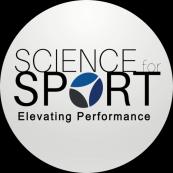
Then check these out...

In one of the initial explanations about how coaches learned and gained knowledge, Trudel and Gilbert (2006) suggested it occurred in one of two ways - the collection of knowledge from specific sources or reflecting upon real-life experiences. Since then, others, such as Wertner and Trudel (2009) and Nelson, Cushion, and Potrac (2006) , have proposed additional methods about how coaches gained knowledge. What is clear from each of the suggestions though is that coaches have a variety of sources from which they can gain knowledge.
When actually asked about how they preferred to learn by Erickson and colleagues in 2008, coaches noted it was a mixture of experiences such as learning by doing, formal coach education, and being mentored by another coach. What is known about effective learning environments and specific sources of coaching knowledge has evolved considerably in more recent times though, in which case, the preference for learning and access to knowledge of current coaches may have also evolved.
The authors of this study wanted to explore how current coaches gained knowledge.
This study was completed using a two-stage mixed methods approach. In the first study, 798 coaches (age = 41.27 ± 12.53 yr; coaching experience = 15.33 ± 10.39 yr) completed an online questionnaire which assessed the actual (i.e., “I have gained knowledge from this source” true or false) and preferred (i.e., “Rate how much you like, or would like to use this source” using a 7-point Likert scale) sources of coaching knowledge they used from a list of 16 sources identified by the authors.
The second part of this study involved the research team interviewing a selection of 14 coaches (age = 43.20 ± 13.82 yr; coaching experience = 19 93 ± 11.76 yr), who originally completed the online questionnaire, to further understand each coaches’ experiences and preferences for knowledge. Each interview was designed to gain insight into each coach’s journey, actual and preferred sources of knowledge (which extended from their answers in study 1), and how coach knowledge and education could be improved.
Study 1
The most used source of knowledge was interacting with other coaches (99% of all coaches), followed by learning by doing (98.6%), and observing other coaches (98.0%).
The least used courses of knowledge were coaching podcasts (53.6%) and academic classes (57.9%).

The most preferred knowledge source was interacting with other coaches (6.07/7) followed by having a coach mentor (5.93).
Academic classes (4.21), coaching podcasts (4.27), and national coach certification online (4.31) were the least preferred sources of knowledge.
Study 2
Of those coaches who were interviewed, it appeared they had a preference for sources of knowledge that allowed for real-life interactions with other coaches or others who facilitate the learning process. This was preferred due to the ability to have meaningful discussions and interactions.
The responses regarding what coach knowledge could include or be improved upon in the future included formal coach education peer mentorship programs, increased use of technology (e.g., to make knowledge more accessible or incorporate it more into coach education), and organising coach certification workshops for when coaches were all in the one place (e.g., national tournament).




Those responsible for the development and education of coaches need to strongly consider the findings of this study. As indicated by the authors, programs and accreditation schemes need to be redesigned to provide current and future coaches more opportunity to interact with other coaches in addition to content knowledge.
Also noted by the authors, the coaches from study 2 provided a number of quality recommendations for what coach education could be improved upon. One idea in particular was the increased use of technology. This has a two-fold impact, the first is new technologies such as online and distance learning are able to make coach education more accessible, particularly to those in remote areas of the world. Secondly, coaches now have access to technology which should encourage and allow them to interact with their learning on a more regular basis. For example, self-reflection can now be complemented with video analysis of coaching practice using programs such as Coach Logic™
Despite the majority of national sporting organisations requiring their coaches, regardless of the team they are coaching, to complete a national certification programme, the majority of coaches interviewed mentioned these programmes were one of the least preferred methods of gaining knowledge. The importance of these programs or at least the content provided within them and how this content is delivered, is something which national sport organisations need to review considering those completing them are not finding them particularly useful or relevant in their coaching journey.
“Many of the ideas and constructs within our education systems, particularly coach education, are based on formal and structured learning. The results of this study clearly indicate there is a desire for coaches to gain knowledge in an unstructured manner, underpinned by social interaction. This is not unsurprising given we are, after all, social beings and have evolved to learn from doing and observing.
“The ideas provided by the coaches in this study are an insight into what coaches want from their coach educators. For coaches to flourish and provide athletes with the most effective practice environments possible, their knowledge needs must form a larger part of discussions within sport organisations.
This month’s top research in strength & conditioning.
SHOULD YOU PROGRESS VOLUME, INTENSITY, OR BOTH WITH PLYOMETRIC PROGRESSIONS FOR ENHANCED, JUMP AND SPRING PERFORMANCE?

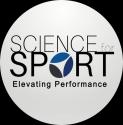
ARE TRADITIONAL SETS OR CLUSTER SETS BETTER FOR THE CROSS EDUCATION PHENOMENON?
IS THE 'REPETITION IN RESERVE' AUTOREGULATION METHOD BETTER FOR STRENGTH GAINS
HOW STEEP SHOULD YOUR HILL BE TO MAXIMISE POWER WHEN SPRINTING
OBJECTIVE
Progression of plyometric training can be done through volume or intensity. Volume is relatively easy to progress, as it is defined as the number of ground contacts per week and session. However, intensity is often overlooked when comparing plyometric training protocols.
High volume or high-intensity plyometrics can potentially have differing acute and chronic effects on performance and delayed onset muscle soreness (DOMS).
Therefore, this study investigated three different plyometric training interventions with a 10% increase in training load, with a different combination of volume and intensity on sprint, agility, and jump performance.
Forty-two physically active men (age = 19-27 yrs) were assigned to four different groups. Training load was matched between groups with a weekly increase of 10% in training load.
The MIX group increased both volume and intensity; INT group increased intensity but kept training volume the same; VOL group increased volume but kept training intensity the same, and CON was the control group.
Volume was defined as the number of ground contacts per training session while intensity was defined as ground reaction force (GRF) minus body mass and GRF x contact time for impulse during takeoff and landing. These values were averaged to create an intensity factor.
The training intervention was eight weeks consisting of twice-a-week training with 10m sprint, 5 x 10m shuttle run , squat jump (SJ), countermovement jump (CMJ), CMJ with arm swing, and broad jump were tested before and after.
Blood markers were also tested for muscle damage being creatine kinase (CK) and lactate dehydrogenase (LDH). SCIENCE FOR SPORT PODCAST EP 72



When training load is matched, it seems increasing volume, intensity, or both provide similar performance benefits. However, intensity seems to be the major variable for blunting performance the following days.
If you perform a lot of high-intensity plyometrics within a training week, perform them as far away from game day as possible. For example, if you have a Saturday game, Tuesday seems to be best suited for high-intensity plyometrics.
Low volumes of high-intensity plyometrics may be a great primer on the day before match day. 2-3 sets of 3-5 jumps on 1-2 exercises will keep the volume low enough to not incur any residual fatigue.
High volumes of low-intensity plyometrics make a great starting point for a pre-season period as it prepares the athlete for higher intensity plyometrics. This study had subjects start at 80 contacts per session and gradually increased to 150 contacts per session in the VOL group. This can be a good guideline to use.

Using a mix of high and low-intensity plyometrics is a strategy you can use in-season. That is touching on lowintensity plyometrics as part of a warm-up and using highintensity plyometrics within the training session itself.
Want to learn more?

Then check these out...
No changes were found for sprint performance for any group. INT (3.4%) and CON (2%) saw improvements in 5 x 10m shuttle run while all groups improved squat jump performance except for CON (MIX: 7%; INT: 11.6%; VOL: 5.4%). CMJ with arm swing and broad jump improved for all three groups greater than CON. SJ and CMJ performance was reduced at 24 and 48 hours after the plyometric INT session but not after the MIX or VOL sessions. CK increased in all three experimental groups 24 and 48 hours after training. Only LDH increased in the INT group.
James
“These subjects were recreationally active so it would be interesting to see if sticking to only low-intensity plyometrics (skipping, low hurdle hops) would improve these physical parameters. Further, the volume of high-intensity plyometrics is what I would consider very high. This being upwards of 75-100 per session of drop jumps, depth jumps, and consecutive jumps. I believe this is what caused the dip in jump performance the following days. When used in lower volumes, you may not see the same reduction in performance and may even see performance enhancement through a postactivation potentiation response.

OBJECTIVE
Cross education is the phenomenon where training one limb improves the strength of the other limb, even when it is not trained. This potentially speeds up the recovery process of injured or immobilised limbs, as immobilisation has been shown to reduce strength by up to 60% (see HERE). However, research investigating which loading parameters are most effective for cross education is scarce.
Therefore, this study aimed to compare two different resistance training set configurations on the crosseducation effect.
Thirty-one physically active participants (age = 24 ± 6.3 yr) were randomly assigned into a traditional training group (TT), a cluster training group (CT), or a control group (CON). The control group did no training. The TT group performed 5 x 6 at 10RM of the machine bicep curl with their dominant arm, with 135 seconds rest between sets, and the CT performed 30 reps with 18.5 seconds rest between reps twice per week for five weeks for one limb. This ensured volume and rest were equated between groups.
Participants underwent testing for both limbs before and after the intervention consisting of height and weight, muscle thickness, 1RM bicep curl, 10RM, 4-second maximum voluntary isometric contraction (MVC), and velocity loss.
SCIENCE FOR SPORT PODCAST EP 83






The cross-education effect favours set configurations that allow for a greater velocity loss, as seen in the TT group. This greater velocity loss indicates greater metabolic stress through the build-up of by-products (lactate and associated metabolites) which leads to greater fatigue.
Hence, to optimise training for cross education, these guidelines have been presented:
4-12 weeks of 3-5 sets of 6-15 reps at an intensity of 60-70% 1RM.
These should be performed in a traditional set structure to maximize strength development. Importantly, the magnitude of changes should only be extrapolated to training with the dominant limb, as this has been reported as the most effective for cross education (see HERE). This means you should expect less transfer if having to train the non-dominant limb. Potentially , this may come down to the ‘non-responder’ phenomenon where non or low-responders simply don t respond well to the volume prescribed (see HERE). Perhaps, more volume may be needed for the non-dominant limb to see the same effects.
Want to learn more?
Then check these out...
The TT group suffered the greatest velocity loss compared to the CT group of 34% and 4% respectively. Regarding the cross-education effect of the untrained limb, the TT group showed the greatest increase in 1RM of 7.3% while CT and CON groups showed no significant range. This represented approximately 80% of the strength gain in the trained limb.
No other significant changes were seen for any other measure. For the trained limb, the TT group significantly improved 1RM (9.4%) whereas the CT group only showed a trend for improvement (3.4%). Further, only the TT group improved 10RM and MVC.
“This is vital information for all coaches and personal trainers. If you are dealing with an injured athlete or client, avoiding the uninjured limb for the fear of creating asymmetry is likely to lengthen their recovery. Further, you don’t want the other limb to atrophy as well as the injured limb.
“In my experience, you can train the non-injured limb very often, as you ’re usually limited to isolation type movements (e.g., leg extensions or other machine-based movements). Perhaps an increased frequency may benefit the untrained limb even more than twice a week training.
“Most importantly, remember those who have undergone surgery for an injury have been put through trauma. While you may want to use this time to get them in great shape, recovery is vitally important and doing too much could impact recovery time."
OBJECTIVE
Planning resistance training in periodised blocks with emphasis on variation, progression and improvements in performance (e.g., strength or power) is suggested to be the most effective method of programming (see HERE). However, what initially sets out to be the often be impacted by the fluctuating readiness of the individual on a daily basis.
Based on the individualised response to training, autoregulation (AR) is a concept that allows for flexibility of and modifications to the given day and training prescription (volume and/or intensity) based on objective (e.g., barbell velocity) or subjective feedback (e.g., rating of effort or repetitions in reserve (RIR).
Although it has shown promise, the effectiveness of prescribing resistance training utilising RIR is unclear. This study aimed to test the efficacy of the RIR method as an AR strategy for strength gains against a more rigid fixed loading (FL) method that was based on predetermined intensities (e.g., percentage of 1-repetition maximum (% 1RM ).



WHAT THEYDID
A total of 31 men (age = 22.6-33.9 years) with resistance training experience (>2 years) and adequate squatting capacity (ability to squat below parallel and strength to squat ≥bodyweight) were assigned a 12- week program (either FL or AR training, see Table 2) broken into three progressive four- week training blocks at random, specifically focusing on increasing strength in the front and back squat.
Maximal strength was assessed by the principal investigator, who was an UKSCA-accredited strength and conditioning coach, testing 1RM front and back squats preand post-training intervention. The FL group was prescribed specific %1RM loads based on the pre-test numbers, while the AR program was based on RIR. The RIR set -by-set intensities were designed to be relatively similar to the specific intensities prescribed in the FL program but with the opportunity to adjust loads based on participants’ perceived ability for the given session.
The training programs were completed by the participants unsupervised but monitored through a spreadsheet that was updated weekly.
Following the 12-week program, differences in training intensity, rate of perceived exertion (RPE), training volume, and front and back squat 1RM strength were assessed between the two training groups.

Progressive overload and varied training intensity are critical for long-term training adaptations.Both training styles (FL and AR) led to an increase in strength through utilising the concept of
progressive overload. Periodising training into 4-week blocks and progressively increasing intensity while maintaining training volume can be an effective approach. Start the first week conservatively (e.g., with a higher 3-4 RIR or 65%1RM for 3x10), allowing for acclimatisation. Then,patiently increase the intensity each week by 2.5% or steadily reduce RIR to support adaptation and allow for improved performance over time.
Most notably, the majority of the training sessions had an average RPE of 6-8 across the 12 weeks, suggesting that training maximally, or to failure (RPE 10), is not necessary to see improvements in strength. Especially when prescribing RIR, coaches can use the athlete s reported RPE to ensure that the intensity of effort matches what was intended (e.g., prescribing an RIR of 4 would expect an RPE of 6-7, depending on volume).
Increases in strength were greater for the AR training program compared to the FL program.
Training intensities were greater for the AR training program compared to the FL program.
RPE was consistently higher for subjects in the AR training program and progressively increased across each 4-week training block.

Just as we modulate load, we also want to modulate exertion levels to allow for productive training. When athletes report an RPE ≥9, coaches should reduce intensity or volume on subsequent days (2-3) to ensure that fatigue does not accumulate. If training is not reduced, athletes are at a higher risk of injury or overreaching that would require more drastic reductions intraining load. Oscillating between RPE values of 5-9 is important.
As noted in this study, improvements in strength can occur quickly (appreciable differences in intensity between groups occurred after week four) and allowing freedom to increase intensity allows for greater progress in strength gains. Percentage based 1RM training prescription can serve as a starting point, but depending on an athlete s readiness level, that given load may need to increase or decrease by as much as 10%. Allowing this adjustment can ensure that training stimulus is optimised based on readiness (e.g., not overly stressful if fatigue or stress is high or taking advantage of a session when the athlete feels fresh ).
Providing athletes with autonomy to adjust the intensity for an exercise basedon how they feel can boost effort levels, enjoyment, and most importantly their performance. Coaches should focus their efforts during a session on promoting quality technique (full range of motion, posture, and intent), holding athletes accountable to those factors, and allowing them to self-determine loads based on either a suggested %1RM or RIR.
“It is rarely one specific thing, but rather a number of factors that help to bolster training results. Coaches aim to find the training means and methods that provide the greatest results in the shortest time, especially when working with athletes during an off-season period. There are limited weeks throughout the year that can be dedicated to strength training, and implementing AR using the RIR method provides an opportunity to maximise the return from training by modifying workloads based on athlete readiness. It is a method that encourages athletes to focus on their effort level, being mindful of their ‘work sets’, and giving them a specific target to achieve.
FL or AR using RIR both take considerable experience and supervision, but a more traditional %1RM style of training takes arguably the most experience of all due to the requirement of a maximal effort assessment. Coaches should work directly with athletes to help them understand the RIR method of intensity as it can be learned and implemented fairly quickly (2-3 sessions). To help athletes understand the application of RIR, have them verbally callout when they reach a perceived RIR of 3-4 in the middle of a set and continue to perform an additional 2-3 repetitions to experience a potential 1-2 RIR. A coach can use their subjective judgement or an objective measure (barbell velocity) to help athletes understand how hard they can push a given set and what a respective RIR should feel and look like. If using a velocitybased measurement in squats, dead lift, or bench press, maximal effort lifts will see repetitions move as slow as 0.2-0.3 m/s.
Want to learn more?

Then check these out...
“The RIR method helps to create a challenge but doesn’t require a specific load to be lifted. By doing this, training sessions can be proactively managed so that loads are not excessive when readiness is low, and opportunities to push are allowed when athletes feel fresh. This is vitally important, especially when training in a team or group setting and aiming to optimise training loads and maximise progress."
OBJECTIVE
It takes high levels of resistance to allow an athlete to display maximal power during a sprint. Previous research has shown the optimal velocity to maximise power is approximately 50% of maximum velocity, which corresponds to approximately 69-96% of body mass (see HERE).
However, it is difficult to standardise loads with sled training as the surface, weather, and sled can influence friction which alters the external load. Little research has investigated the effects of hill gradient on sprint performance and individual force- and load-velocity profiles. Only one study reported a 3% loss in sprint speed on a 3° (5.2% gradient) hill, which is well off the 50% velocity decrement required to maximise power.
Therefore, this study aimed to determine each hill gradient's effect on sprint performance relative to the entire load-velocity relationship.
Twenty-four USA Division 1 collegiate athletes (age = 21 ± 1.5 yr) from several team sports performed two maximal sprints on three different hill gradients; 5.2%, 8.7%, and 17.6%. Subjects also performed three sprints on flat terrain which totalled nine sprints, all performed in a randomised order. All sprints were 30m and measured using a radar device to calculate the force-velocity and load-velocity profile of each subject.
Theoretical maximum force (F0), theoretical maximum velocity (V0), maximal power (Pmax), slope of the forcevelocity profile (FVslope), ratio of force (RF), and decrement in ratio of force (DRF) were measured as part of the profiles.

You’re likely not going to be able to choose the gradient of the hill you want to use in practice. And the hill you have available likely won’t be steep enough to optimise horizontal power development.
But hills aren’t limited to being used for maximising power development. A typical hill can be used to develop late-stage acceleration due to the prolonged acceleration body postures.
Further, a typical hill that doesn’t reduce maximum velocity to a great extent may be great for athletes who display a velocity deficient force-velocity profile. Generally, these athletes will focus on over speed sprinting, flat ground sprinting, and very light resisted sprinting. The hill can be an easy option instead of the sled. The advantage of using a hill instead of a sled is the resistance is constant if the incline is constant.
Finally, it’s important to understand that velocity loss between subjects varies very slightly and therefore, each athlete may get a different stimulus from the same hill, which is magnified as the gradient increases. However, since most hills are not steep enough to elicit a drop of 50% in velocity, and creating load-velocity profiles is near impossible unless you have multiple hill gradients in one place, then a generalised approach can be taken with groups of athletes. Here is when and how you could use the hill for sprint performance:
Option 1: Beginning of Pre-Season
Using any hill to sprint is an easy way to gradually progress athletes to full sprinting. Since you are not going to be hitting maximum velocity within the first few weeks of training due to the risk of injury, the hill can easily limit the maximum velocity reached.
The first 1-2 weeks can have athletes run to a self-imposed 80-90% on flat ground. The following two weeks can be maximal efforts on the hill, as even a 5% gradient will reduce maximum velocity by approximately 8% leaving you around the 90% mark.
Option 2: Prescribed Based On F-V Profiles

As mentioned, those who are deemed to have a velocity deficit in their force-velocity profile may use the typical low gradient hill as part of their sprint training. If you have access to very steep hills, then these can be used in training for force-deficit athletes and can even make up part of their gym training program to attack the force side of the spectrum.
Want to learn more?
Then check these out...
A linear reduction in velocity was found for each increase in hill gradient.
5.2% hill gradient = 92 ± 2% of maximum velocity
8.7% hill gradient = 87 ± 2% of maximum velocity
17.6% hill gradient = 75 ± 3% of maximum velocity

For each 1% increase in hill gradient, there was a -1.7 ± 0.1% reduction in maximum velocity. The hill gradient that optimised power (50% velocity decrement) was extrapolated using the load -velocity profile which was found to be 35.1 ± 2.3%. The slope of the load-velocity profile was strongly negatively correlated with maximal velocity, V0, FVslope, and DRF suggesting those who are force deficient or very fast are most negatively affected by hill gradient.
Subjects who were more force dominant with superior F0, Pmax, and RF were least affected by hill gradient.
SCIENCE FOR SPORT PODCAST EP6



“Calculating the gradient of a hill isn’t easy. You need to have the final elevation measurement. It is much more practical to subjectively categorise the hills you have available as not very steep, steep, and very steep. If you only have one option, even better, as there is no room for confusion.
“There are some limitations to this study such as not having steeper hills to analyse data from and not analysing how the kinematics of the sprint change as the hill gradient increases. It would be interesting to see if those who struggle to push and project while accelerating would benefit more from steeper hills.”
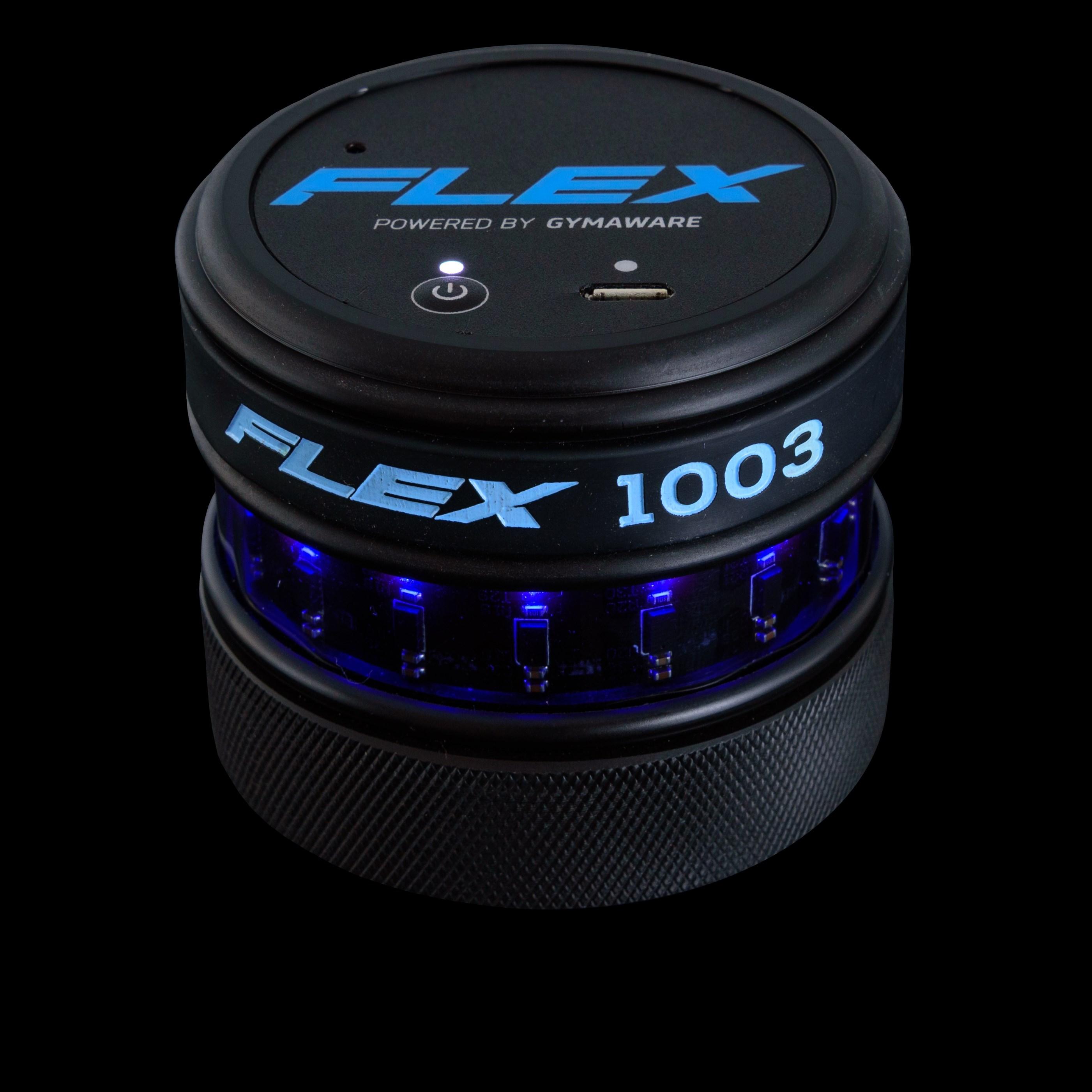
This month’s top research on technology and monitoring.
WHAT IS THE INTERACTION OF SPEED AND TECHNICAL SKILL IN AUSTRALIAN FOOTBALL?
CAN YOU INCREASE YOUR CHANCES OF WINNING BY OPTIMISING IN SEASONWORKLOAD

Time motion or movement analysis is a process that examines the physiological demands of a given sport (see HERE).
Taking time to develop a generalised understanding of the distances, various speeds , and rate of technical involvements helps to provide coaches with objective direction in prescribing training volume and intensity prior to competition (see HERE). The problem is, much of this information is averaged across the entire match - therefore the windows of time that require the greatest intensity, rate of interaction, or technical execution are seemingly lost and misrepresented.
Therefore, the purpose of this investigation was to assess peak movement and technical segments during professional Australian football (AF) competitions, analysing various time windows for comparison, understanding, and optimised training development.
A team of 38 professional AF players collected competition data from 22 games during the 2017 AFL season using a global navigation satellite system microtechnology device (Optimeye S5, Catapult Innovations), examining average speed and PlayerLoad.
Subjects were categorised by position (e.g., midfielder, small defender and forward, or fixedposition), and technical skills (free kick, handball, kick, or tackle) were also time-stamped for each player and game to understand the frequency of those involvements (n min-1). Microsensor and technical data were segmented into oneminute periods and analysed for match speed, PlayerLoad, and involvements across various (1, 3-, 5-, 7-, and 10-min periods) rolling average durations.
Examination of the data showcased the relativity of peak technical involvements to average speed demands that occur at various time points across a match.

By understanding the peak rate of technical involvements during a match, coaches can design drills that are specific to the competitive environment. Requiring athletes to engage directly with the ball or opposing player, challenging decision-making ability and sport-specific technical skills at various time intervals (e.g., every 30-60sec for 3-10min) while continuing to jog, stride, or sprint at various speeds throughout.
When coaches are aiming to improve technical skills specifically, isolate those skills and allow for repetitions every 30-60sec without additional running, offering complete, stagnant rest between each. This reduces fatigue and improves motor learning through the increased quality of work for the given skill (e.g., kicking, dribbling, tackling, etc.) and offers time for the coach to provide feedback and instruction on how to improve or highlight things done well.

During opportune times (e.g., off-season or pre-season), coaches may look to provide a training environment that is more stressful than what is seen in competition by modifying field size. By reducing field size, the technical involvements occur at a greater frequency, with less total and high speed running, while increasing field size increases the amount of running and high-speed work an athlete is likely to achieve between technical involvements. Coaches should identify what they are trying to accomplish for the session in deciding which aspect to prioritise (technical skill or physical development).
Coaches should appreciate the frequency and intensity of competition demands relative to speed and technical involvements, but not get too narrowly focused on that aspect with negligence for total volumes (duration and distances) experienced. Both intensity and volume need to be progressed and managed prior to and during a competition season for all sports.


Want to learn more?

Then check these out...
During time windows (1-, 3-, and 5-min) that had an increase in technical actions, there was a decrease in speed. This relationship was most notable during the 1-min period that saw only a maximum of three technical involvements, highlighting the peak average speed at > 200-m min-1, but having the greatest decrease due to a technical involvement.
When analysing the 7- and 10-min segments, players with 1-3 technical involvements showed an increase in average speed but decreasing as involvements increased to greater than four during that time-window.
PlayerLoad metrics followed the same trend as mean peak speed, decreasing as involvements increased during shorter windows, but during the 10-min window there was a slight increase in the first few involvements.
As expected, small position players and midfielders had more technical involvements compared with fixedposition players, but all positions showed similar average speed and PlayerLoad.

“The results of this research indicate that both speed and technical involvement are important for competition demands, and their interaction is unavoidable, but they are two qualities that arguably should be developed independently of one another.
“For AF, both speed and technique are important, but technical skills edge out speed (see HERE and HERE). With that in mind, it must be a priority throughout the year to develop the necessary skills and ability to execute skills in a variety of ways and situations. Exposure here is the key, initially performing repetitions under little fatigue, allowing for recovery and feedback between repetitions to promote skill acquisition. Aerobic conditioning and speed development still need to occur, but they should happen afterward in an isolated manner.
“As the competitive season nears, exposure to the blend of physical, technical, and tactical demands is vital for optimal preparation. Ultimately, the context and success of these various ‘technical involvements’ matter, so do not simply take these rates as a representation of all AFL teams - the AFL team examined was one of the worst in the league, so their tactical efficiency and efficacy may have created unnecessary demands.
“But the method of examination is valid, as coaches should continue to zoom in and out on the demands of the sport, and most importantly, the demands placed on their specific team, always appreciating the ultimate goal with these metrics in better serving and preparing for success.”
Running capacity has become a critical piece to success in soccer matches around the world (see HERE and HERE), with a substantial increase in the volume of high-intensity running (e.g. >19.8 km/h in the English Premier League, see HERE). This places a high priority on the physical ability of athletes and the management of recovery between matches to optimise athlete readiness and performance on gameday.
Although training with both high intensity and volume at times is necessary to prepare athletes for competition, it is unclear what the minimal effective dose of training can be across the days and weeks of a season that provides athletes the best opportunity to be successful. The primary purpose of this study was to examine fluctuations in locomotor performance on the field during training and matches across each week during the season, looking for relationships between workload ratios in training compared to competitions, and attempting to identify a connection to the match result (win, draw, or loss).
Twenty-one male soccer players from a Croatian national team (age 24.19 ± 2.46) wore global positioning system devices during training and competition across the 202021 season. For consistency in comparison, training weeks were examined based on specific parameters: Only one match was played in the week
At least six days between matches
At least four training days in the week
Further, to reduce influence of uncontrollable circumstances, matches that involved a red card, poor weather or field conditions, or had title or relegation potential were excluded. In total, 14 matches and associated training were examined, looking at total distance covered, volume of running at various speeds (e.g. jogging, running, sprinting), as well as volume of acceleration and decelerations (total classified as >±0.5 m s-2 and high-intensity >±3 m s-2).
Using these various metrics, a training-to-match ratio was calculated for each, based on the week and the number of days prior to the match, e.g. match day (MD) minus days prior to (MD-2 if it were a session held two days prior to competition day). These ratios were examined to better understand training load prescription across the week leading into a match and identify potential influence it may have had on the outcome (win, loss, or draw).
SCIENCE FOR SPORT PODCAST EP 77




During the season, with weekly competitions, coaches must plan out the flow of training sessions across the week to allow for recovery from the previous match, with reduced low-intensive training or complete rest, and identify the day or training session mid-week that allows for the opportunity to dose higher intensity running (e.g. >19.8 km/h for a male professional level team) but allows enough time to recover for the subsequent match. The primary goal in season is to maintain physical abilities, but maximise readiness on gameday.
Maintaining aerobic fitness helps protect the athlete, reduce injury risk (see HERE) and maintain performance potential.
Specifically, the authors suggest, coaches should aim for 75-80% of the high-intensity running volume experienced in a match to be performed in the training session that is MD-3. This can occur in sport- specific drills or can be done through constrained strides with specific rest periods (e.g. 80m strides within a specific time, allowing 30-60sec of recovery).
Coaches cannot shy away from maintaining high chronic workloads, with an emphasis on physical fitness and athleticism (e.g. aerobic endurance, strength, speed, power). This is vital to mitigate fatigue during a match, reducing mistakes, increasing the chance for on-ball success (see HERE). Ultimately, helping a player to see, think, and respond better under challenging situations late in a match.
Coaches should reduce training volume and intensity in the two days prior to a match. Emphasis should be placed on tactical strategies, low-intensive technical work and running speeds that help to maintain fitness (aerobic system capacity).
If players have increased soreness or fatigue in the days leading into a match, reductions in training loa dcan help. Athletes should also be encouraged to be proactive in supporting recoverythrough increased sleep, increased awareness around nutrition (e.g. protein intake, hydration, nutrient-dense foods), and incorporating an active-cooldown post-training (see HERE).
Incorporating a wellness questionnaire (see HERE) on a daily basis prior to training allows coaches to keep a pulse on each athlete’s psycho-physiological state, which can be incredibly helpful in guiding training load decisions, helping reduce injury risk and maximise readiness on game day through appropriate loading strategies or modifications.
When the competition schedule allows for it (e.g. six days between matches), having a day completely off after a match can be helpful to allow for a more endurance-based and technical session in the day following (MD-5). This will help to maintain and improve two very important qualities (endurance and technical skills) to on-field success (see HERE).
Want to learn more?

Then check these out...
Training load relative to the match was highest three days prior to the match (MD-3) and lowest MD-1 and MD-2.
Training values for high intensity accelerations were the workload metric most closely related to what is seen in match-play, but high-intensity running was consistently under-prescribed in training compared to match volumes.
There was a greater chance of winning the upcoming match when high-intensity running was 50% higher on MD-3.
The likelihood of winning increased when, in the training sessions that took place five days out (MD-5), higher volumes of total distance, lowintensity running, accelerations and decelerations were recorded.
From a tapering standpoint on MD-1 and MD-2, total running distance, low-intensity running, and total accelerations and decelerations were 2025% lower when the team won the upcoming match, than if the match resulted in a draw or loss.

“The relationship around an increase in high intensity running in the MD۳ session and a successful match outcome begs the question as to why that was occurring. I would be interested to know more context around the opponent, subjective reports from the athletes, and the circumstances around it, because there is definitely more to the story regarding the subsequent increased likelihood of winning a match.
“Regardless, this study helps us to zoom in and reminds coaches to arrange the week appropriately during the season, identifying windows of time to train, maintain and possibly develop physical qualities that will promote on-field success. It is important to recognise however, that as coaches we need to also appreciate the 12-20+ week season, being flexible and adaptable if there are signs that point to under-recovery and lack of readiness.
“The title suggests that if training sessions do not achieve equivalent volumes relative to match demands, that athletes are ‘undertrained’, but this is only a problem if it leads to higher rates of injury and poor performance. The ultimate goal is to keep injuries minimal and athletes performing well individually based on fitness, speed, technical, and tactical abilities. When these qualities are developed appropriately, maintained, and prioritised for gameday – winning is very likely.”

This month’s top research on fatigue and recovery.
WHAT CIRCUMSTANCES AROUND MATCHES IMPACT TRAINING LOAD PERFORMANCE AND FATIGUE?
DOES FOOT ROTATION INFLUENCE ACTIVATION DURING HAMSTRING EXERCISES AFTER AN ACL RECONSTRUCTION?

Through the use of wearable micro-sensors (e.g. global positioning systems), volumes of training can be quantitatively tracked and assessed by objectively measuring training load (TL). Coaches can use this data to provide a methodical approach to decisions around training sessions, with the ultimate goal of maximising performance during competition by managing volume and intensity while minimising the risk of injury due to accumulated fatigue.
Performance and fatigue are especially important for teams looking to remain healthy and productive across a season.
Regarding TL monitoring, there is a lack of understanding as it relates to contextual factors (e.g. opponent ranking, match location or outcome). This research examined weekly TL values for an inseason soccer team, with the intent to identify relationships to the circumstances (contextual factors) around competitions.


Twenty-three outfield soccer players (male, age = 27.8 ± 3.9 years) from a top Spanish League team had TL monitored, specifically looking at total distance (m), high-speed running (HSR, >16 km h-1-1) , and total number of acceleration and decelerations as external measures and heart rate relative to maximum (%HRmax) as an internal TL measure during the final 12-wk of the 2017-18 season.
TL data was compared to various contextual factors, e.g. opponent ranking (top six, middle six, or bottom six teams in the league), match location (home or away), and match outcome (win, draw, or loss) to identify potential relationships with variance in weekly training volume and intensity in the days pre - or proceeding competitions.
Ultimately, researchers sought to identify the relationship and potential influence that these contextual factors have on external and internal TL variables within the days between competitions.
If financial resources allow for it, coaches should invest in a technology (e.g. wearable microsensors) that provides quantitative objective measurement of training volume (e.g. distance covered , high-speed running). This is helpful in monitoring and managing the duration, intensity, and recovery of training instead of relying on a coach s qualitative evaluation, which can carry emotional baggage in the heart of the competition season that can negatively influence appropriate prescription of TL.

Monitoring TL via external variables (e.g. total distance covered, high-speed running distance, accelerations) provides an objective measure of the total work endured, and going another layer further with an internal measure of intensity (e.g. heart rate) can help to provide an understanding of the relative load for a given session and athlete. This individualised approach allows for comparison to previous training and optimises readiness by recognising a potential lack of recovery if heart rateresponse is higher than normal (see HERE).
Athlete readiness can be challenged during travel, especially when changing time zones (see HERE ). Therefore, coaches can do their part to assist in the recovery process when travelling by decreasing session duration or better managing extended high intensity work by increasing break periods to improve quality.
Training volume should gradually build through pre- and early-season periods, but towards the middle of the season, training loads should plateau and gradually decrease heading into championship tournament opportunities. Exposure to match-specific high-intensity speed, change of direction, and heart rates should continue throughout the season in order to provide that necessary stimulus on a frequent basis.
When coaches are planning a microcycle (week) in season, the session with the highest intensity work should be placed at the mid-point between competitions. By doing this, it will maximise time for recuperation from previous competition, as well as a return to peak readiness prior to upcoming competitions.
For professional adult male soccer players, the average maximal aerobic speed is 0.16 km h-1, which can serve as a useful speed threshold for others at that level. However, coaches should modifythresholds specific to their club by using maximal aerobic speed values from preseason testing (see HERE) or look at research based on age (see HERE) or gender (see HERE). Coaches should appreciate the physiological loads players experience when going against higherlevel competition, recognising the physical and mental demand associated, and reduce TL (volume and/or intensity) in the training sessions in the 24-48-hr following to help boost recovery for subsequent matches.
During the season, each microcycle is going to have a similar layout based on training targets and proximity to match-play, but most importantly coaches should be supportive of the physical and mental load that athletes are managing prior to each competition. Especially for high-level opponents, coaches can find ways to build confidence with technical and tactical feedback and guidance. Alternatively, prior to competitions against lower-ranked opponents, coaches can use sessions to build on weakness and challenge athletes physically and mentally.

Then check these out...
WHAT THEY FOUND
A decrease in total number of accelerations and decelerations in the sessions before an away game was the only association noted for match location.
Overall training volume (total distance and HSR) increased in the sessions following a lossor match against a top-tier opponent.
The volume of high intensity work (HSR) increased in the week following a match against a lower-tier opponent.
Before winning a match, teams noted higher intensity training via %HRmax.
Across the 12-wk examined, variables of total distance covered and the number of accelerations gradually decreased but variables of intensity (HSR, %HRmax,and decelerations) remained steady across the weeks

“This piece of research highlights the influence that contex t has on TL - the relationships are no doubt evident, but these are not necessarily cause-effect relationships . Considering this analysis was performed retrospectively, much of the decisions on training volume and intensity could be inherent behaviour and prescription from the coaching staff. Experienced coaches often have the ability to recognise fatigue,manage TL, modify training based on athlete readiness and optimise performance for upcoming matches without TL data.
“Considering the high-stakes atmosphere and high-performance approach that many clubs take, it can be helpful to have data to support decisions being made to optimise athlete performance on game day. Ultimately, what TL monitoring using micro-sensors allows is objective measures of accountability to better manage TL and athlete str ess across a season when emotions run high due to opponents, travel, and the pursuit of victory.

Anterior cruciate ligament (ACL) reconstruction is one of the most commonly used surgical interventions for the treatment of ACL ruptures. During reconstruction, there are many options that can be used for the new ACL, one of those being the semi tendinosus-gracilis graft. Different grafts pose both pros and cons, however one con of the semitendinosus-gracilis graft is persistent hamstring weakness and atrophy following anterior cruciate ligament reconstruction (ACLR). The aim of this study was to investigate the influence of foot rotation on activity of the medial and lateral hamstrings post-ACLR.
Twenty patients post-ACLR utilising a hamstring graft, who were at least nine months post-surgery, performed three different exercises (prone leg curl, single-leg bridge, and Nordic hamstring) each with three different foot positions (internal rotation (IR), neutral, and external rotation (ER)).
For each exercise, individuals completed 3-5 consecutive familiarisation trials followed by five consecutive (except for the Nordic Hamstring exercise for which single repetitions were separated by a two-minute rest period) experimental trials per foot position.

During the exercises, electromyography (EMG) activity of the medial and lateral hamstrings as well as knee joint range of motion were recorded on the surgical limb.
During the prone hamstring curl, medial hamstring EMG activity of both concentric and eccentric contractions was higher in IR than in neutral and lower in ER than in neutral.
During the prone hamstring curl, both eccentric and concentric contractions for the lateral hams trings demonstrated higher EMG activity in ER than in neutral.
During th e prone hamstring curl, eccentric EMG activity of the lateral hamstrings was also lower in IR than in neutral.
During the single leg bridge, concentric and eccentric EMG activity of the medial and lateral hamstrings was not affected by foot position. During the Nordic Hamstring exercise, eccentric EMG activity of the medial and lateral hamstrings were not affected by foot position.




Rehab professionals as well as S&C coaches working with athletes post-ACLR should prescribe the prone hamstring curl with biases of foot rotation in order to increase hamstring muscular activity, due to persistent weakness and atrophy seen after ACLR utilising a hamstring graft.
Prescribing the prone hamstring curl with foot IR will help maximise muscle activity of the medial hamstrings, which may provide benefits during post-operative ACL rehabilitation with a semitendinosus-gracilis graft.
It is likely that foot rotation only influences lateral and medial hamstring activation when foot rotation is actively performed (as can be done in a prone hamstring curl) compared to when the foot is in a fixed position (as seen during a single-leg bridge, or Nordic Hamstring curl).
Want to learn more?


Then check these out...
“One primary role of the ACL is to prevent tibial translation - the hamstrings function in the same fashion, but are a muscle group instead of a ligament. Therefore, it is important to progressively load the hamstrings during ACL rehabilitation, even more so when a hamstring graft is used during reconstruction. This is due to the persistent deficits in knee flexor strength seen after reconstruction.
In addition, since strength is more protective over injury than mobility, we should be focusing on triphasic hamstring strengthening in a well-rounded injury risk reduction programme.
This month’s top research on youth development.
BACKWARDS VS FORWARD SLED TOWING: WHICH IS BETTER FOR HIGH SCHOOL ATHLETES PERFORMANCE?
WHAT ARE RELIABLE MARKERS OF STRESS-RESPONSE IN YOUTH ATHLETES
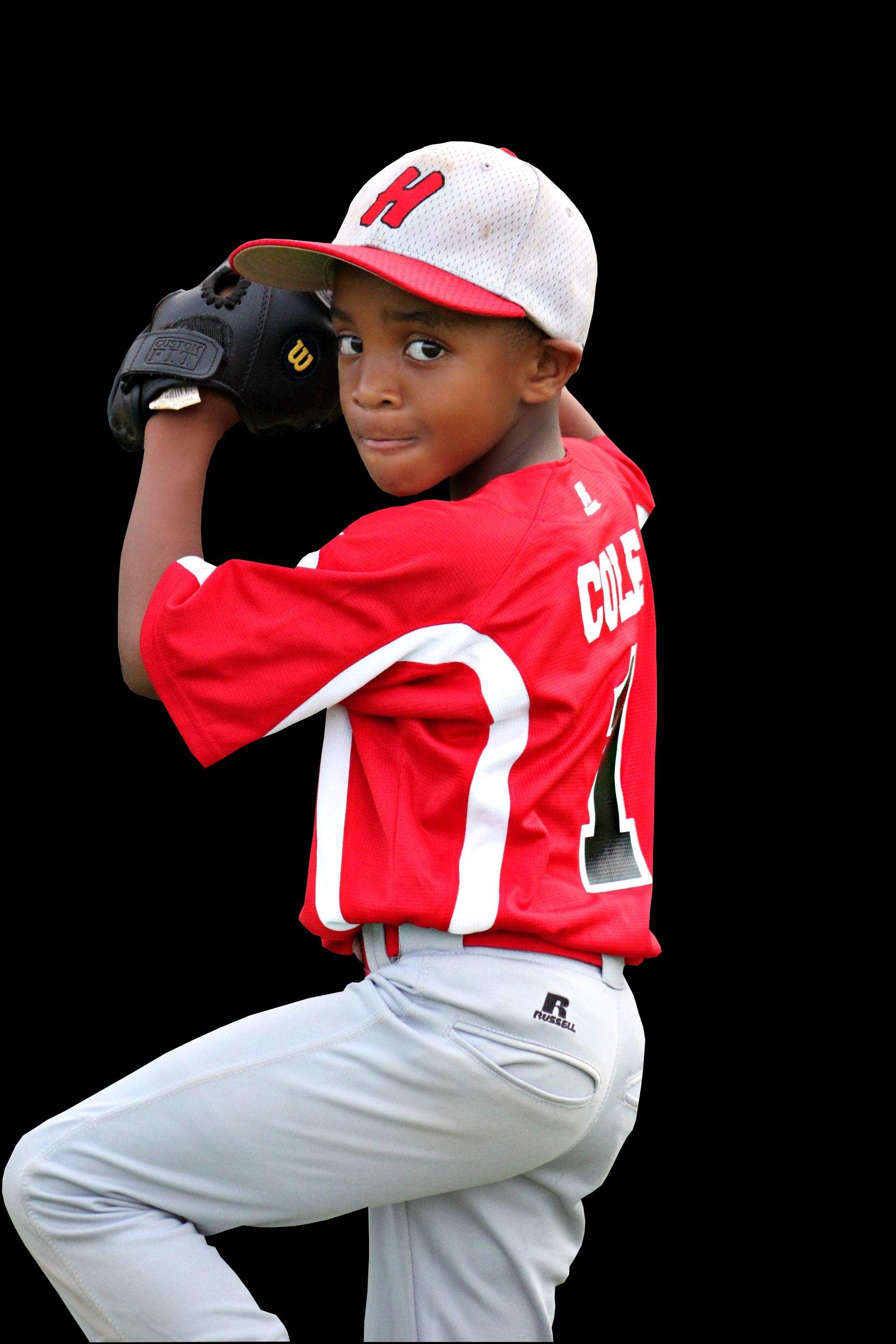

Many aspects of sport, including team selection, are linked to an individual’s ability to sprint. Fast sprinting can be trained in a variety of ways, through sprint technical work, repeated maximal efforts, sled or resisted running, or conventional strength training.
Although sprint speed will naturally develop with maturation (HERE), coaches are continually looking for the most time-effective methods to develop such qualities.
Recently, research from Uthoff and colleagues (HERE) reported that progressive backwards running over eight weeks resulted in improvements in short (10-20m) acceleration times as well as other performance qualities (e.g., countermovement jump). Given these findings, backwards running may be an effective way to train youth.
Therefore, this study compared the effect of forward sled towing vs. backwards sled towing on various physical abilities.
One hundred and fifteen boys (13-15 years) from one school participated in this study over eight weeks. Participants were matched for maturity and then allocated into either a forward resisted sprint (FRS; n = 34), backwards resisted sprint (BRS; n = 46), and a control group (CON; n = 35).
Pre and post-training data were collected for sprint times over 10 and 20m, countermovement jump (CMJ) height, and leg stiffness (20 submaximal hops). The resisted running programme was identical for the FRS and BRS groups, consisting of 6-9 sprints over 15m with loads that progressed from 20% to 55% of body mass.
The following cues were used for appropriate technique and health and safety; (a) “drive your arms”, (b) “punch your knees”, and (c) “push maximally during each step”. The CON group followed their usual PE programme, comprising50 minutes of various modified sporting games such as touch rugby, cricket, and soccer which included interspersed periods of running and sprinting. During this time, the BRS and FRS groups completed their protocols.


Leg stiffness has been proposed as a key characteristic of high velocity sprinting (HERE). It relates to the ability of the muscles, tendons and ligaments to work together to store elastic energy whilst lowering the metabolic cost of movement. Other strategies to improve stiffness in youth include playing chasing and hopping games (HERE), pogo jumps (HERE), and skipping (HERE). Plyometrics that develop “stiffness” are typically characterised by short ground-contact times (<250ms). Cues such as “snap” , “pop” or having the athlete complete the task as though “the floor is lava” generally produce the desired movement pattern (e.g., fast ground contact times).
Many of the additional benefits of backwards running have been described in the attached article, such as improved proprioception, VO2 performance and quadriceps muscle recruitment. However, knowing how to effectively cue for BRS is important. A slight lean of the chest forward enables the centre of mass to allow for a backwards trajectory. One of my favourite cues here is “nose over toes”, as this ensures the hips are moving backwards with intent. As many athletes are unfamiliar with the change in centre of mass, I’d build up from walking, jogging, to a fast jog in the first two weeks. Secondly, athletes should be encouraged to push through the ball of the foot, with a similar arm action to forward sprinting (e.g., opposite arm opposite leg). A visual of the technical model can be seen in Uthoff’s earlier publications in the area HERE.
Sleds serve as a fantastic form of manual guidance, providing athletes with a load which allows them to maintain key positions for a longer duration of time. An example of this can be seen in the attached video. In this video, the desired technical positions (positive shin angles, forward lean, and a big arm split) are discussed. Adding load by pushing or pulling during early acceleration not only creates the constraints for the aforementioned technical positions but encourages a rapid switch between the legs to drive the additional weight forward. This reinforces the forceful and generally higher ground contact times that you will see in top-end sprinters. One downside of sleds is they can be very expensive, so in the attached video HERE, coach Kuszla has you covered with a cheap alternative
The findings of this study report all performance measures (CMJ, leg stiffness, and 10 and 20m speed) remain unchanged for the CON group. All variables significantly improved after a BRS intervention, while all but the 10m sprint performance improved after FRS.
When compared with the CON group, BRS and FRS significantly improved CMJ and leg stiffness, however, no differences were found between the two training groups.
The BRS group showed the greatest improvementsin sprint performance over all distances (↑1.4-2.4% improvement). However, these were still trivial to small compared to the other groups. In addition, more participants benefited from BRS compared tothe FRS and CON groups.
This study suggests BRS can be an effective method to train speed, vertical jump, and stiffness qualities in youth. However, statistically, BRS was not found to be more advantageous than the FRS group.
“Coaches and scientists who are supporting an injured youth athlete must ensure that they take positive steps to reintegrate them back into the team climate, which may include group warm-ups or adjusting a programme so that they can have a training partner. The physical symptoms of injury can be somewhat obvious (e.g. muscle strain), impairing movement and the ability to produce a skill safely, however, the associated psychological symptoms (e.g. loss of identity, frustration, disengagement, irritation) can be less visible. In these circumstances, I would suggest that the coach/scientist is very transparent with the child, the parents, and any coaching staff regarding the road to recovery.
Given the severity of associated physical and psychological symptoms of injury, investing in preventative injury management is important. In the attached podcast below, it is suggested that regular load monitoring, consideration of exercise selection, and wider enquiry into their academic week (e.g. high periods of stress = lower training load) should all be considered. For example, sitting down with the schools Physical Education team and parents with a view of “mapping” out their week can be a good way for cooperation and to ensure adequate rest between fixtures.”




Most research that highlights monitoring, training and understanding an athlete s physiological response to stress centres around adult (>18 years) athletes, but dedicated, consistent, year-round training is becoming more commonplace for younger (13-18 years) athletes.
It is well understood that sleep is an important recovery tool and training stress is a necessary piece to development and improving performance, but balancing the training load and recovery of young athletes can be a difficult challenge with all they are juggling (e.g. academics , social life, sport, psychological well-being).
Identifying monitoring strategies that showcase overall recovery and highlight an elevated stress response can be helpful to optimising progress. Measuring heart rate variability (HRV), cortisol, and blood lactate can be ways to objectify readiness and recovery during training, but this has not been explored in great depth with regards to adolescent athletes.
This study monitored young endurance athletes in an attempt to identify potential interactions between HRV, salivary cortisol, sleep, and blood lactate during submaximal running across a seven-week preseason and competition training period.
Eight national level endurance athletes (16±1 years) were monitored across a seven-week training period in the five weeks leading into the first two weeks of competition. HRV was measured in conjunction with sleep using a ballistocardiographic sleep-tracking device on a daily basis, while at four various time-points (weeks 1, 3, 5, and 7) an assessment protocol that included a submaximal running test looking at blood lactate and saliva samples to measure cortisol in the three consecutive days surrounding the test (before, day of, and following) were performed.
The athletes’ specific training was categorised as ‘easy’ (zone 1 or 2, ≤2mM blood lactate) or hard (zone 3-5, above aerobic threshold) and was used to calculate training load with this method.
Considering all the data collected (HRV, cortisol, lactate levels during submaximal exercise, sleep, training loads), these variables were analysed to identify potential relationships as each athlete s response to training unfolded in the weeks leading into a competition phase.
SCIENCE FOR SPORT PODCAST EP 75



HRV is a measure that reflects the state of the autonomic nervous system. Taking a measurement first thing in the morning provides the best opportunity to achieve arelaxed and reliable metric. This provides context to how restful the prior night of sleep was, and the athlete’s stress-response to training. Coaches would hope to see a relatively elevated measurement as this signifies that the athlete is coping with thetraining load and the biopsychosocial environment they live in. Especially with endurance training, there will be a trend to see HRV increase over months-years, butwith young athletes the goal should not be to decrease HRV but to steadily increasetraining volume and not push them into a potential maladaptive (low HRV) state.
Depending on the HRV measurement technology, a morning measurement would be preferred over a nocturnal measure, but if both are available, combining nocturnaland morning measures provides more understanding (see HERE). Only looking at thenocturnal measure does not account for the restorative process that occurs through anight of sleep. The hope is that parasympathetic tone increases and the autonomicnervous system is able to stabilise upon waking. The combination of the measureshighlights the quality of sleep and ultimately the subsequent recovery status of anathlete.
The reason HRV is such an excellent measure to implement for young athletes whomay be more reserved and withholding when it comes to stress, is because HRV can showcase more than just response to training load. Since it highlights the individual s autonomic nervous system, it is a holistic measure that can be impacted by any sortof environmental stress an athlete is being impacted by. This aspect was highlightedin the study by the elevated stress noted from the potential anticipation forcompetitions to begin.
Coaches can use a given submaximal workload (e.g. jogging a specific pace, cycling, rowing, etc) to monitor heartrate response and highlight potential stress overload and decreased performance (see HERE). Especially with endurance training, the goal would be to improve cardiac output, reducing heartrate at a given load because of improved stroke volume and cardiovascular efficiency. This happens through a commitment and consistent prescription of low-intensive, steady-state work across the weeks of training, steadily building volume over the years.
Especially for youth athletes (13-18) sleep is critical to physical and mental development. Coaches should encourage 8-10 hrs (see HERE) of sleep per night to maximise recovery and improve performance (see HERE). Helping athletes develop strategies around time management and creating a bedtime routine can be essential for success in this space.
Stress management (see HERE) is the last area that needs to be addressed when working with youth athletes. They often put a lot of stress on their shoulders and are juggling a lot when it comes to social, developmental, academic, and athletic commitments. Life can become overwhelming without the proper guidance and support system.
Want to learn more?
Then check these out...
The night-time measure of HRV was related to salivary cortisol, in that when the nocturnal HRV measure was lowest, cortisol measures were at their highest (both indicating high levels of stress).
There was a noticeable decrease in HRV from weeks 3-7, indicating some sort of elevated stress, even though the amount of intense training was decreased, highlighting another potential psycho-physiological stressor outside of the training load.


Athletes slept less during the initial three weeks of training , showing a relationship to an increase in ‘hard’ training and salivary cortisol levels during this period as well. During weeks 3-5, when intense training was reduced, salivary cortisol followed the same reduction even though training load was increased because of more volume with ‘easy’ training.

“The two primary concepts I took away from this article center around the importance of appreciating psycho-physiological response to training and life stress. Using a measure like HRV helps to provide a holistic measure of an athlete’s response to all they are balancing, and highlights adaptability for optimised training and productivity. Which lends itself to the other aspect that must remain at the core of what coaches that work with youth athletes do - they remind themselves to not take competition, training and sport too seriously, to where it becomes unenjoyable. Remember to play the long game and focus on a lifetime of training for youth athletes. The goal is to keep things enjoyable and focus on long-term adaptations versus getting as good as possible, as fast as possible. This means governing the amount of high intensity work and continuing to prioritise technique and a progressive volume of low intensive work.
Health should always be the priority for adolescents, placing a precedent on recovery, steady improvement, and using sport as a catalyst to prepare them for the demands of life and adulthood. In the end, winning is not everything - the athlete and their well-being should be.”

This month’s top research on nutrition.
SHOULD WE BE WORRIED ABOUT THE GLYCEMIC INDEX OF A CARBOHYDRATE SUPPLEMENT WHEN IT COMES TO COGNITIVE DECLINE?
A LOOK AT THE ENERGY AND NUTRIENT INTAKE OF YOUTH PLAYERS
OVERHYPED AND OVERUSED? CHRONIC ANTIOXIDANT SUPPLEMENTATION IN YOUNG FOOTBALLERS

Cognitive function is known to decline during prolonged periods of exercise. For example, players' ability to successfully perform skillful tasks has previously been shown to decline the longer exercise occurs. In many sports, including football (soccer), skill is a significant factor to performance and is dependent on an athlete's cognitive function, thus preventing this decline is of great interest to coaches and players alike.
Supplementing with carbohydrates hasbeen shown to reduce the effect ofcognitive decline in skill sports (Ali andWilliams, 2009). Currently, high glycemicindex carbohydrates are used at regularintervals to both fuel the athlete andprevent this decline. However, high GI foods can cause rebound hypoglycemia tooccur, which may result in cognitive decline. Therefore, the present article studiedwhether a low GI carbohydrate drink couldbe more beneficial in preventing cognitivedecline in football players than a high GIcarbohydrate drink.
Utilising a double blind, randomised crossover design, 11 university soccer players who had trained three times per week for at least six months prior to the study were recruited.
Each participant reported to the lab for one preliminary familiarisation session and two experimental sessions, one for each experimental treatment. The experimental sessions were designed to simulate a game of football and consisted of four blocks of intermittent running, ranging from walking pace to 90% of peak speed with three minutes of passive recovery between blocks. After the third block, a 15 minute “half time” period of rest was taken before the final block was performed. Following the final block, a soccer skills test was done.
During each block, the participants carried out two tests of cognitive function, the Eriksen Flanker test and the serial seven subtraction test; see the associated videos for examples of these. These tests had been practised in the familiarisation sessions, the Eriksen Flanker test was scored on reaction time, accuracy and conflict cost (difference in reaction time between congruent and incongruent patterns). The serial 7 test was scored on accuracy and speed. Heartrate was monitored throughout the tests, and measures of blood glucose were taken via finger pricks prior to drinks being consumed, 15 minutes after, prior to the warm-up, after the warm-up and then after each block of running. Rate of perceived exertion (RPE) levels were also self-reported by the participant after each block using the 6-20 Borg scale.
Each participant was subject to both treatments across the course of the study and only two out of the 11 were able to correctly identify which drink was which. The drinks themselves were a low GI beverage made from hydrothermally modified corn starch (HMS) and a high GI dextrose beverage. Both contained 8% carbohydrate and were split into two servings. The first contained 0.5g.kg-1 carbohydrate and was taken 30 minutes prior to a 10 minute wa rm-up prior to the test beginning. The second serving contained 0.2g.kg-1 carbohydrate and was consumed at halftime. Both beverages contained the same electrolyte profile. Water intake was not controlled between participants but was recorded in the first experimental test and replicated in the second.
Prior to the tests, the participants consumed a standardised meal the night before, consisting of 1 g.kg-1 carbohydrate. Participants then fasted for 12 hours and in the 24 hours prior, had not carried out any exercise or consumed caffeine or alcohol. Water intake was not tracked during the 12 hour fast.
Blood glucose concentrations were lower for HMScompared to dextrose, 15 and 30 minutes after ingestion (5.3 ± 0.6 vs 7.7 ± 1.4 mmol•L 1 at 15 and 5.6 ± 0.6 vs 8.3 ± 1.0 mmol•L 1 at 30) but greater afterthe first exercise block (5.8 ± 0.5 vs 5.1 ± 0.6 mmol•L 1, p = 0.004). The authors do not detail differences in levels further on in the test, although, claim that neither intervention led to a state of hypoglycemia.
In both interventions, RPE increased with each blockuntil the ‘half time,’ rising from a mean value of 12 to 14 in the HMS intervention and 13 to 15 in the dextroseintervention. There was found to be no overall effecton RPE between treatments. However, RPE in the firstblock was found to be lower with HMS compared todextrose.
In the measures of cognition, they found no significant difference in reaction time or accuracy for congruent trials in the Eriksen flanker test. However, it was found that with HMS supplementation, the incongruent trials were answered faster than with dextrose, without compromising on accuracy. In the serial seven test, there were no significant differences in the number of responses given or in accuracy of responses.
The authors concluded low GI carbohydrate ingestionis superior at preventing declines in cognitive functionthan dextrose.
SCIENCE FOR SPORT PODCAST EP 66


Want to learn more?


Then check these out...




Any athlete participating in an intermittent team sport should supplement with carbohydrates during competition to attenuate cognitive decline.
I currently believe there is not enough evidence to say low GI carbs are superior in this regard, so if an athlete currently uses high GI carbohydrates and does not seemingly experience any adverse effects on performance or cognitive function, then they should keep doing what works for them. A practitioner should work with the player to create fueling timelines that best suit the sport and prevent physical and mental fatigue.

It might be worth trialing low GI carbohydrate beverages with athletes in training to see if your athlete prefers this. However, HMS is likely relatively expensive to produce and hard to acquire whilst high GI supplements tend to be more readily available. It is important to consider an athlete's rituals and comfort levels in this context as lower GI carbohydrates may result in gut upset.

Other aspects of nutrition can also help prevent cognitive decline. Dehydration has been shown to have a profound negative effect on cognition in team sports, so a personalised hydration strategy for each individual should be created and is likely to benefit. Caffeine has also been shown to improve cognitive function in certain populations, so caffeine supplements of (3-6mg.kg-۱) prior to the game and potentially during are likely to be beneficial. These protocols should always be practised prior to a game and ideally kept within the recommended safe limit for healthy adults of 400mg.day-۱
Continuous blood glucose monitoring using commercially available subcutaneous, wired enzyme glucose sensors such as freestyle libre, could be a useful tool to identify or prevent any instances of hypoglycemia that may affect cognitive function. They enable you to construct an individualised profile of the athlete and their glucose responses to certain meals and training sessions. Because these responses will be slightly different between individuals, it allows for individualised interventions to be made.
’


“This article, coupled with the related article below, do provide some scope to the utility of low GI carbohydrate during exercise for preventing cognitive decline. We know current practices may not necessarily be optimal for cognitive function due to the potential of rebound hypoglycemia, and it is a very interesting area of research that is constantly developing. I believe until better controlled research is published, we should focus on available evidence.
“I believe hydration is just as important when it comes to preventing cognitive decline. Interestingly, although this study replicated water intake for both tests, it did not control or measure hydration status at the beginning of each test. This is a limitation because if an athlete is starting exercise dehydrated , it will be incredibly hard to rehydrate during and will of course affect performance. This is one of the reasons why this study does not necessarily add much weight to the argument for low GI carbohydrates.
“Another limitation to the present study is that the authors don’t provide details on blood glucose levels, so we have no real context for the glycemic status of the athletes during several of the tests. Although the authors claim none of the tests were carried out in a hypoglycemic state, some data to back this up would have been useful. In this vein, I believe the use of continuous blood glucose monitoring would have improved recommendations given as if we are able to keep blood glucose levels above an ‘acceptable level’ then it’s likely possible to do so using either high or low GI carbohydrates! This is what I hope to see more of in the future so that practical and personalised recommendations can be given based on an individual's individual response.”
Want to learn more?
Then check these out...
Tennis is a sport consisting of repeated high intensity bouts of exercise for long and varied durations H it requires athletes to have significant levels of cardiovascular endurance, power, speed and agility. These requirements are the same at youth level - professional players can be as young as 15, while those as young as 12 often train for up to 20 hours per week and compete in multiple matches per day.
Fueling to support this high volume and intensity of training and competition is key to success. Nutritional considerations include keeping energy availability high, improving recovery from training and competition, and maintaining health and immune function to prevent a decrease in performance. Practical recommendations for fueling adult tennis players are outlined in the related article. However, there are currently no specific recommendations for youth tennis players. The present study aims to quantify the total energy and macronutrient intake along with the distribution of intake on training and competition days for youth tennis players. It then discusses the findings in the context of the current recommendations and how they may relate to this specific population.
Twenty-seven youth tennis players who represented their country were included in this study. They ranged from 11 to 17 years of age and trained between one and three times per day, for up to four-and-a-half hours. They competed on competition days that included between one and three matches, lasting between an hour and two-and-a-quarter hours.
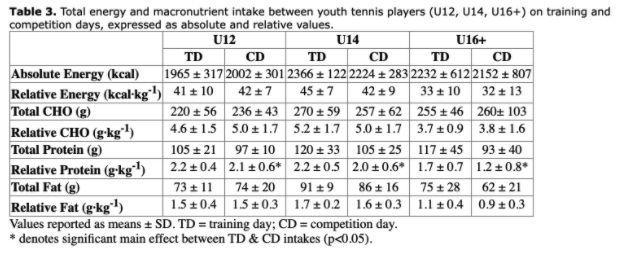
Each of the players kept a seven-day food diary using a printed template containing sections for both food and training. Meals were labelled as breakfast, lunch, dinner and snacks. Portion sizes were asked to be quantified using either standardised measures or simply the amount of the certain food. The diaries were cross-referenced using the remote food photographic method as previously used by Anderson et al 2017 in professional football players. The players used an app called MealLogger and uploaded everything they consumed within the seven days along with a description of the meal. Both the diaries and photos were reviewed and cross-checked with a multiple pass 24-hour recall test to improve reliability.
The data itself was analysed using Nutritics (a food analysis software program) and analysis of all diaries was carried out by the same researcher.

Training volume and intensity was recorded in the diaries and the players outlined whether it was a training, competition or rest day, and then provided detail on the duration, type and intensity of the training they carried out.
The mean total energy intake per day for the participants was found to be 2027 kcal.day-۱ for those under 12 years of age, 2275 kcal.day -1 for under-14s, and 2243 kcal.day-1 for under-16s and above. There was found to be no significant difference in total energy intake between competition or training days. The authors suggested that total intake was potentially insufficient to optimise performance and recovery, however did not state any values for expected energy expenditure of the participants.
The total and relative intake of carbohydrates, protein and fats are shown in the table below, taken from the paper, for all age groups studied and for competition and training days.


The researchers found no significant difference in carbohydrate intake between age group and day, with all age groups seemingly consuming less than the recommended amount of 6-10g of carbohydrates per kg per day as outlined in the related article on nutrition for tennis players below.
The authors concluded that players consumed significantly more protein relative to their bodyweight on training days compared to competition days. All participants consumed protein similar to the recommended guidelines for youth athletes.
Fat intakes were not commented on within the paper aside from the values given above.
Want to learn more?

Then check these out...
There was found to be no significant interaction between playing age and day for distribution of energy and macronutrients at breakfast, lunch and dinner. However they did find a significant increase in protein intake at lunch on training days compared to competition days (0.73 g·kg-1 vs 0.49 g ·kg-1). There was no significant difference in the frequency of snacking between competition and training days along with no significant difference in the composition of snacks.

There was no significant difference in the frequency of snacking between competition and training days along with no significant difference in the composition of snacks.
Based on the current recommendations, it seems youth tennis players may under -consume carbohydrates and total energy intake which may have an impact on performance, recovery and their development.
Because of this, practitioners should take steps to increase intake when needed to meet the requirements for both performance and growth of the youth through further education. These interventions should always be tailored to the individual athlete and their needs. See the related article on energy and macronutrient intake for youth athletes for more.
Due to the satisfactory intake and distribution of protein within this population, carbohydrate -rich snacks could be a relatively easy way to increase fuel intake. Practitioners could also look to incorporating intra-workout and intra-competition carbohydrates to ensure energy availability remains high. This is of particular importance during competition days, producing a fueling strategy tailored to the athlete and one they have practiced and are comfortable with, which is key. This strategy should be based on the current recommendations of 30-60g of carbohydrate per hour for matches lasting longer than two hours.
Because there are currently no recommendations specifically for youth athletes and because of the speedat which children of this age can grow and mature, all nutrition interventions should be individualised andbased on objective and subjective measures of performance and recovery given by the player themselves.

Education on good practices in nutrition along with why they should be carrying out these practices andhabits should be given to any youth athlete to help continue their career and keep them as healthy aspossible throughout.


“Nutrition within this population can sometimes be a relatively tricky thing to balance due to changes in player mental and physical wellbeing across this age period. It is important athletes of this age establish a good relationship with food that leads to them being able to support their performance, reduce risk of relative energy deficiency in sport and reduce any potential symptoms of disordered eating, which can be common in athletes this age.
“Because these specific recommendations for this population group will be very hard to achieve , instead I believe an individualised approach that relies upon a good level of education and positive habits that result in intakes required for the athlete to sustain performance and grow is important.”


Want to learn more?
Then check these out...
When we exercise, there is an increase in oxidative metabolism that results in an increase of reactive oxygen and nitrogen species that contributes to oxidative stress at the muscle. Markers of oxidative stress, such as reductions in glutathione and increases in catalase activity, have been found to peak at certain times after exercise - even up to 96 hours after. It is thought this may result in some muscle damage, muscle soreness and suppression of the immune system. Antioxidants work to reduce oxidative stress and in the diet are found as Vitamins A, C and E (among others).
They have previously been studied as a way to reduce oxidative stress and supposedly increase exercise performance, however this has not currently been proven and in fact some studies have shown high doses of antioxidants may blunt exercise adaptations.
This study looked to quantify the effect of chronic supplementation with antioxidants in the form of chokeberry (a fruit commonly grown and consumed in eastern Europe) juice on pro-oxidative-antioxidant balance in young professional footballers and how this may relate to muscle damage and performance.

Utilising a double blind, randomised control design, 20 young (15-16years old) male semi-professional footballers were recruited from a Polish football team competing in the central junior league. Players were randomly assigned to either a supplement or placebogroup and were asked not to take any other supplements two weeksprior to and for the duration of the study. Training load was the sameacross both groups, as they were from the same team. The nutritionalintake habits of the group were similar across the study, withparticipants consuming balanced meals based on daily energyrequirements. Any high anthocyanins, phytosterols or antioxidant foodswere said to be excluded from all meals but no indication was given asto how this was achieved.
The supplement group received 200ml of chokeberry juice per day (for49 days), split into two 100ml doses, in the morning and evening forseven weeks. The placebo group was given a drink containing betaineand citric acid that was identical in appearance and taste to chokeberryjuice.
Before and after the seven weeks of supplementation, the participants carried out a maximal multistage 20m shuttle test (or bleep test) used to predict VO2max.
Blood samples were taken before , immediately after, three and 24hours after each of the exercise tests. Blood samples were analysed to measure: serum levels of thiobarbituric acid reactive products, 8-hydroxy-2deoxyguanosine, total antioxidant capacity, iron, hepcidin, ferritin, myoglobin, and albumin, and morphological blood parameters (red blood cells, (RBC), haemoglobin (HGB), haematocrit (HCT) meancorpuscular volume (MCV) mean corpuscular haemoglobin (MCH), mean corpuscular haemoglobin concentration (MCHC), and lactic acid.
SCIENCE FOR SPORT PODCAST EP 41



Chokeberry juice as an antioxidant supplement is unlikely to be effective in reducing markers of oxidative stress or in improving performance in small concentrations. Practitioners may want to consider increasing concentrations or using alternative antioxidants with better evidence, for example Vitamin C or polyphenols from foods such as mixed berries.
Based on this paper and previous research, other high dose antioxidant supplements are likely to have a similar effect (or lack thereof). Practitioners may also want to consider avoiding high dose supplements immediately post exercise to prevent any potential blunting of training adaptations.
Practitioners should instead look to take a food-first approach as there are still many benefits from consuming antioxidants in the diet. Encouraging athletes to “eat a rainbow” of fruits and vegetables will help ensure sufficient doses of antioxidants are consumed that may improve recovery without danger of blunting training adaptations. An easy practical solution is to aim for five different colours of fruit or vegetable across a day, with two different colours at each meal.
Antioxidants are also just one aspect of recovery and performance. When looking to recover, aiming to refuel, rehydrate and repair post-exercise will help ensure muscle soreness and damage is not excessive and thus shouldn’t affect performance. Outside of nutritional interventions, things like improving quality and quantity of sleep will also have a huge impact on an athlete’s recovery and performance.
Both the supplemental and placebo groups improved their predicted VO2max scores and distance covered in the beep test after the seven weeks. There was however no significant difference between groups with regards to this improvement. The supplement group improved from an average predicted VO2max of 58.82 ml.kg.min-1 before vs. 60.35 ml.kg.min-1 after, with the placebo group scoring 58.48 ml.kg.min-1 before vs. 60.36 ml.kg.min-1 post seven weeks.
A significant interaction between groups was found for albumin and iron levels, however this interaction was not seen following the exercise test. There were no other significant interactions for measures of inflammation.
Chokeberry supplementation did not significantly affect blood morphology or other pro-oxidative-antioxidant balance indicators.
There were no statistically significant changes in body weight, body mass index or adipose tissue in either group following the seven-week intervention.


“I believe the studies we currently have on antioxidants are sometimes blown out of proportion on both ends of the spectrum. The potential benefits we may see from supplementing antioxidants and recovery are ultimately low and unproven - on the other side, the blunting effect we may see from antioxidant supplementation occurs in very high doses with acute supplementation. For example, I have previously published work in professional rugby league players showing no benefit of cherry juice supplementation following competition rugby match-play. Until we see more research, there’s a very good chance that a middle-of-the-road approach, with a diet that is naturally high in antioxidants, may well be the best thing for both recovery and performance.
“The authors of this study attempted to reduce antioxidant consumption within the diet so as not to interfere with the results, however it is impossible for antioxidant consumption between groups to have been totally controlled or removed entirely- this is unlikely to have affected the total outcome of the study but it may have affected the individuals’ recovery.”




The next issue will be published on the 1st of next month.
Did you like all the great content in this issue?
If so, then make sure you spread the knowledge with your friends and colleagues!

